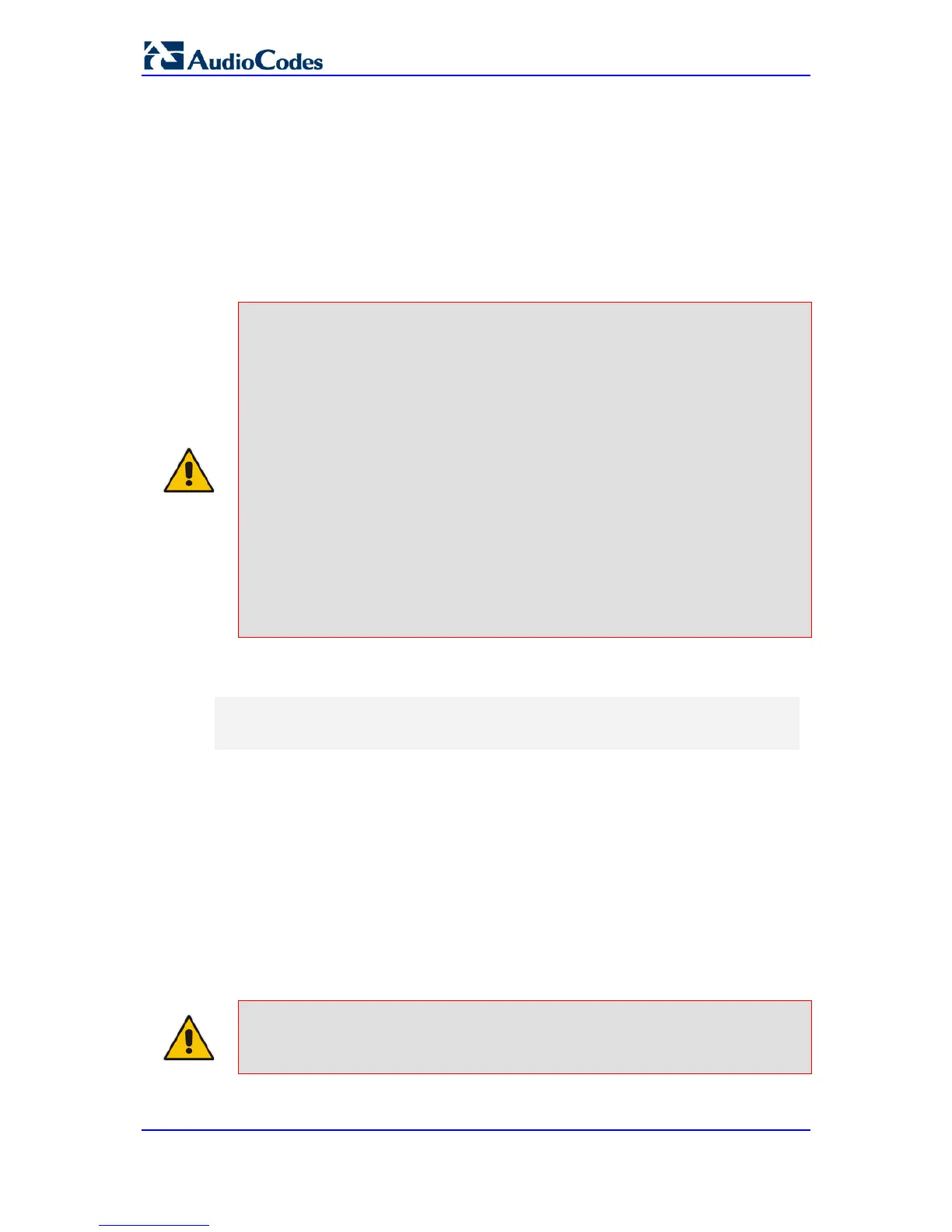• IP-to-IP Calls: Maps SIP From (calling number) and To (called number) of IP PBX
extension numbers with "global" numbers. For example, if the device receives a
call from IP PBX extension number 402 (calling / SIP From) that is destined to IP
PBX extension number 403 (called / SIP To), the device changes both these
numbers into their "global" numbers 638002 and 638003, respectively.
Registering Users: The device can register each PBX user configured in the User
Info table. For each user, the device sends a SIP REGISTER to an external IP-based
Registrar server, using the "global" number in the From/To headers. If authentication
is necessary for registration, the device sends the user's username and password,
configured in the User Info table, in the SIP MD5 Authorization header.
Notes:
• To enable the User Info table, see 'Enabling the User Info Table' on page 339.
• To modify the Use Info table, you need to load a new User Info table containing
your modifications.
• To enable user registration, set the following parameters on the Proxy &
Registration page (Configuration tab > VoIP menu > SIP Definitions > Proxy &
Registration) as shown:
√ 'Enable Registration' parameter set to Enable (IsRegisterNeeded is set to
1).
√ 'Registration Mode' parameter set to Per Endpoint (AuthenticationMode is
set to 0).
• For FXS ports, when the device needs to send a new SIP request with the
Authorization header (e.g., after receiving a SIP 401 response), it uses the
username and password configured in the Authentication table (see 'Configuring
Authentication per Port' on page 265). To use the username and password
configured in the User Info file, set the 'Password' parameter to any value other
than its default value.
The User Info file is a text-based file that you can create using any text-based program
such as Notepad. To add mapping rules to this file, use the following syntax:
[ GW ]
FORMAT
PBXExtensionNum,GlobalPhoneNum,DisplayName,UserName,Password
Where:
Password is the password (string of up to 20 characters) for registering the user when
authentication is necessary
Each line in the file represents a mapping rule of a single PBX extension user.
You can add up to 100 mapping rules. The maximum size of the User Info file is 10,800
bytes.
Note: Make sure that the last line in the User Info file ends with a carriage return
(i.e., by pressing the <Enter> key).
An example of a configured User Info file is shown below:
